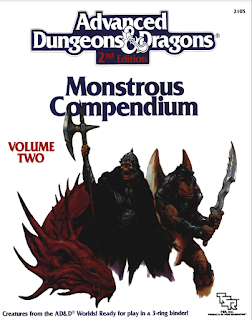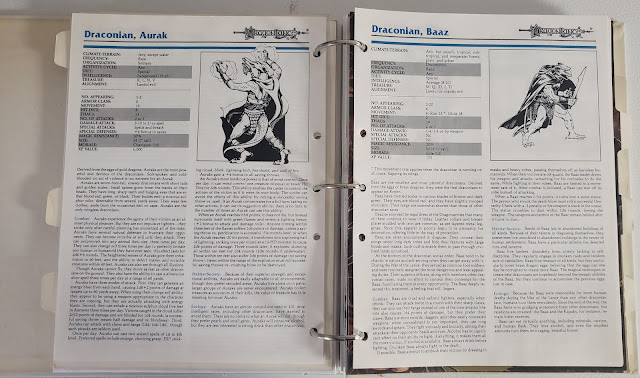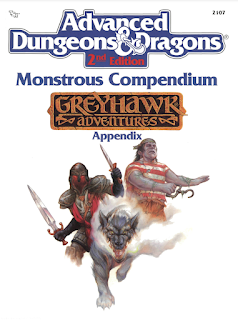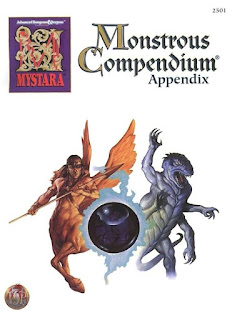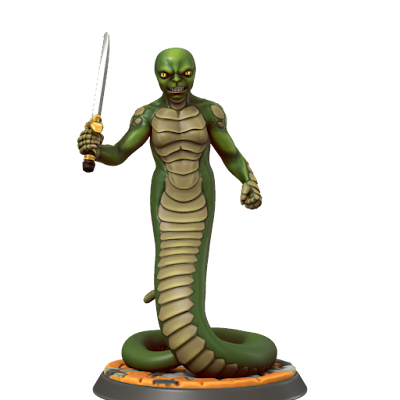It's the week of Valentine's Day. My wife and I have a LONG overdue date night and Misfit Studios has released their latest Kickstarter for OGL 3.75 (D&D 3.5 and Pathfinder I take it).
The Book of Passion, by authors Will Wells and Margherita Tramontano, adds role-playing rules for love and sex to your OGL 3.75 campaign. Long-time game designer/editor/developer, Christina Stiles, will publish the book via Misfit Studios.
To find out more about this project I went to the authors to ask some questions.
Interview with Will Wells and Margherita Tramontano
(
Full Disclosure: I work with Misfit Studio on the Strange Brew line of Witch and Warlock books. Margherita has contributed to my book. This book and Strange Brew share editors Christina Stiles and Robert Hudson in common as well as artists Jacob Blackmon and Peter Bradley.)
Tim: So with tell me who you are and what your other publications of note have been.
Will: Well, I'm an English teacher from Cleveland who has been gaming since 1999 (see next question) and has been creating fan-made rule systems and modifications to the same for basically just as long. I love to translate what I see in film, books, and video games into tabletop rules (likely from my start with the Fusion system, which did that for Bubblegum Crisis - again, see below).
Most of the time, this sort of thing has just been for my own personal use. In fact, that's how the Passion Mystery started. Sometimes I post my system modifications on the Paizo forums for others to use as well (again, as seen with the Passion Mystery).
As for official paid publications, my only current publications are outside the gaming realm - although that is about to change in a big way - Margherita and I have been doing a lot of work for Christina Stiles the past few months.
Also - fun fact - I've been trying to write a bio for the front-matter of some of the aforementioned work, and haven't been able to hit the right tone. I think I just did here, so if you don't mind, I'm going to steal basically everything I just said for my official bio.
Margherita: Well, I am an Italian Literature teacher and a mum of two boys. I always wanted to be a writer since I was a little child. I published two volumes of poetry and some chapters of my fantasy novel… then I began sending articles to Wayfinder. The Paizo forums put me in contact with so many great persons that also were authors and publishers, so I tried to send something to them too. And here I am, working with people I look up to.
In recent years, I published articles in several issues of Wayfinder, on the Kobold Press blog with a series of options for their shaman class, and in the new version of Green Ronin Publishing’s Advanced Bestiary (Teratocephalos template). I also co–authored four Letters from the Flaming Crab for Flaming Crab Games and created the Esotericist oracle archetype for The Knotty–Works; for Everyman Games, I am the author of Childhood Feats and Mysteries of Passion; and I contributed to The Colossal Creatures Bestiary for Zenith Games with the kaiju Dypthera. For Christina, Will and I co-authored and developed the Talented Adventurers of SpirosBlaak line. This year more projects in which I am involved should see the light!
Tim: I suppose I should ask how you all got into gaming. So. How did you get into gaming?
Will: Back in 1999, I picked up a copy of the Bubblegum Crisis RPG because I was a huge fan of Bubblegum Crisis. Having bought the book, it only seemed right to try it out.
From there, I jumped into 2nd Ed D&D just before the release of 3rd Ed - and 3rd Ed just made so much more sense to me than THAC0.
Margherita: It was a little tragic. I was involved in a game run by a friend, and since I always was curious about RPG, I accepted (it was a 2E campaign). It did finish well for my character, but much less well for me. I thought it would be an heroic Arthurian fantasy manga campaign, while the master and the other players were all into gothic dark Arthurian fantasy manga gaming. Like so many newbies, I couldn’t keep myself and my character separated, and the game’s flavor caused me a long period of deep depression and anger.
Fortunately, this stimulated me to learn more about the game, to understand whether I was wrong or my master was. I read manuals, tried to translate rules, created my own characters, campaign, game world and novels, and- well, ultimately I fell in love. I began to write my own rules at first just for myself. I found many beautiful netbooks of rules written by gamers (one was the Netbook of Witches and Warlocks, another the Complete Guide to Unlawful Carnal Knowledge!).
I never loved 3E or 3.5E much, however. But one day I found Pathfinder. The rest is history.
Tim: Great. Now tell me about the
Book of Passion. Who’s idea was this and what are you hoping gamers can get from it?
Margherita: It was in part a coincidence. Will had started a thread on the Paizo forums with his first draft of the Mystery of Passion. I was searching for a way to convert one of my 2E characters to Pathfinder (the same that became my iconic romance oracle in the Book of Passion), and his idea was the nearest thing to her I could found then. So I answered to the thread with some ideas to make the mystery better. Before we knew, we were working together, exchanging ideas for the mystery, then for oracle archetypes tied to the mystery, then for other classes… I don’t remember which one of us had first the idea of making a book, but we liked it more and more. I had already proposed some pieces to Owen K. C. Stephens and Christina, so I thought to try sending some examples to them. And now, after some years of work, the book is nearly ready to become a reality.
Will: For me, it started with the release of Paizo's Advanced Player's Guide. I loved the Oracle class during the playtest, and was eagerly awaiting the final book to see what interesting options would be released for clerics of Calistria. I preordered the book and, when it finally arrived, I practically tore it open to get to the Oracle section and - nothing. No mystery was listed for Calistria. I was really disappointed - and after a brief snit, I decided that the best way to fix this was to make my own.
Except, of course, that Oracle mysteries are intentionally broad, so I couldn't make one specifically for her - I had to pick an aspect that she represented. Plus, since I was also a huge fan of the works of Jacqueline Carey (particularly Kushiel's Legacy), I kept Naamah in mind as well. Sacred prostitution is a shared theme between both goddesses, so that's where I started.
Tim: I am looking forward to that, I have used Naamah myself in other games. What is one of your favorite features about this book?
Margherita: Among the parts I wrote, I like the Merciful Oracle archetype -the one that my iconic uses- but also the Chasmalim angel, which is the good counterpart of a succubus, and of course my pregnancy and hybridization rules, and the stats of my character. Among the parts Will wrote, maybe the richest of hints, flavor and fantasy are his descriptions of sex-oriented societies. But the Mystery of Passion is the book’s nucleus, the one from which everything else has grown, and we wrote that together!
Tim: What sort of games/stories do you expect that people will use this for?
Will: Any story that features romance, love, or sex. Many (if not most) published Pathfinder adventures (by any publisher) feature these things, but they were usually on the "plot" side of things with no mechanical elements. For example, in one adventure I can recall off the top of my head, it is a minor background note that two of the major NPCs are in a lesbian relationship with one another. Aside from some motivations, however, this has no impact on the character builds.
With the Book of Passion, that could change. Now, if there are two characters (PC or NPC), they could choose to take "Marriage Feats" - a special kind of teamwork feat that only works between individuals in a romantic relationship (they don't actually have to be married, but if you are choosing feats together, that's pretty significant commitment).
It can be as simple as that - or as complicated as the GM and players like. During the playtesting for this book, I ran a game that resembled a fantasy romance novel. There was a lot of political machinations, covert intelligence gathering, and - yes - a lot of seductions and romances. Characters fell in love, entered into complex relationships (including a particularly complex polyamorous relationship between a married couple, their lover, her other lover, and his fiancee), suffered heartbreak, and in one case got murdered by a botched assassination aimed as the person sitting next to them. The game was high melodrama and a lot of fun, with the archetypes, feats, and spells from the Book of Passion being a great way to flavor a character. In fact, two of the three iconic character we present in the Book of Passion are from that game.

On the far end of the spectrum, we also playtested in a grim low-fantasy setting more reminiscent of Game of Thrones with a bit of Berserk (the manga) thrown in than anything like the usual Pathfinder setting. And there, too, the Book of Passion was highly useful. While there was far less magic in this game, several of the archetypes proved useful, as did a number of the more sinister monsters from the Book of Passion's Bestiary.
That's the thing - sex and romance are part of most of the stories we tell. Whether they are the main focus, like in the romance novel game, or they are part of the tragic background, like in the low fantasy game, they're almost always there, somewhere. Being able to make romance more core to a character, either through an archetype, feat, or spell, allows that oh-so important part of our characters' lives to be represented in their builds.
Margherita: I hope it will not be used to traumatize players or GMs! (Laughs) The book can be used not only to decide if a character gets pregnant or not, it also offers great tips for roleplaying many different situations and relationships in which sex must not necessarily be involved. If someone is just in search of “new positions”, then this is not the book they want.
Tim: It has to be asked, but is this just “Sex in D&D”? (nod to any old-school gamer that remembers that one).
Will: Yes - and no. We do an update to some of the more common rules for sex presented in several different 3rd and 3.5 books, but that is literally the first half of the first chapter. Sex has been part of D&D for a while now, and Pathfinder in particular has embraced that to a much greater degree than previous versions of the game. However, while sex is a present and important aspect of the game, there is little a player can do to use sex meaningfully as part of their character.
That's where a lot of our work in this book comes in. By far the largest chapter is a series of archetypes and class features for every class from Core, APG, Ultimate Magic, Ultimate Combat, and Advanced Class - all of which have to do with sex or romance in some way. These features aren't just about flavor - they're about making sex and romance useful. If you are a cleric or oracle who is granted spells by a god or goddess of fertility or sexuality, you should gain powers from that deity that relate to those aspects of the deity. If you want to play a high class prostitute who uses sex to draw out information from his patrons, you can do that. Or, if you want to play a knight with a pledge of courtly love to a noblewoman, you can do that too. Archetypes for all of these concepts - and many, many more - are supported in such a way that even games that stick to a "fade to black" style PG rating can still use them. A lot of game tables don't like to get into specifics but still use sexual themes, and we wanted to make sure they were covered as well.
Margherita: Nooooo. Love has many facets, and sex is just one of them. Will appreciates quality erotism, while I have a more romantic and platonic approach. We integrated both these points of view into our work. There is the temple prostitute inside, but there also is the virginal healer, the platonic lover, the courtly love-voted cavalier and bard. Passion is a nearly limitless subject.
Tim: So a related question. What about the supposed “adult” content in this book. What do say to potential critics?
Will: First of all, I would ask where they were during 3.5 when at least five books on this topic (working sexuality into D&D) were released. The concept of this book is nothing new - it's the execution, and the fact that it hasn't been done for Pathfinder yet, that make our book special.
Secondly, if you're talking about nudity, then I would remind any potential critics that the 3.5 "Book of Erotic Fantasy" used actual photographs of real models for its nudes, often photo-shopped in a very "uncanny valley" way to attempt to create magical effects. We're using drawings - beautiful, well crafted drawings. Again, anyone in a snit about this is nearly a decade late to the barbecue.
Does the book talk about sex? Yes, quite a bit. In fact, I make a point in chapter 1 to define sex as "oral sex, anal sex, vaginal sex, tribadism (aka scissoring), manual sex (aka hand-job or fingering), brachiovaginal insertion (fisting), or any other direct stimulation of one or both partners' genitals." We don't just talk about sex - we talk inclusively about sex, making sure to cover various types of sexual relationships.
We also talk about the concept of "sex-positive" both as it applies to the book at large and to societies in various game settings. Unlike some previous books on the topic, we don't make any assumptions about what a given race's sexual mores are and instead provide guidelines how sex-positive social mores might interact with various alignments.
Of course, we also talk about love and romance. As I mentioned before, our archetypes are as likely to be focused on the emotion of love as they are to be on the physical act of sex.
Margherita: We always used a respectful language and a respectful approach to the many ways in which people see love. Some of the monsters and characters included in the book enjoy rape or non-consensual domination: these are evil. Many more enforce reciprocal trust, fealty and sincerity in a relationship, and defend even love that some would find “wrong”. These are the good ones and the model roles we hope to show to our readers.
Tim: Last question, something I always ask. Who is your favorite witch, wizard or magic-user and why?
Margherita: Tiffany Aching. Because she will be the greatest witch in the Discworld and has surpassed even her teacher. She has all her teacher’s virtues and none of her teacher’s quirks. Though if I were a witch, I’m afraid I would be more a Magrat than a Tiffany.
Oh, and the witch I created for Christina, Marena Lenoire, is cool too. (Laughs)
Will: Favorite Witch? Wow, how specific. Okay - for me, that would be Anthy Himemiya from Revolutionary Girl Utena. While she isn't a "traditional" witch, that is how she's described in the show, and she does have the power of illusions. As to why - Anthy's story is that of a victim breaking free of her own guilt and finally walking away from her abuser. She makes mistakes along the way and betrays her best friend, but it is that very betrayal - and her friend forgiving her for it - that finally makes her see that she can't keep being that person anymore and needs to change. And change she does. Her character arc is both tragic and uplifting, horrible and beautiful, and I love her to death.
--
Personally I think it looks like a lot of fun.










